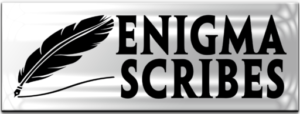Introduction to CSS
Welcome to our comprehensive CSS tutorial! In this guide, we will take you through the fundamentals of Cascading Style Sheets (CSS) and show you how to use it to enhance the appearance and layout of your web pages.
What is CSS?
CSS is a stylesheet language used for describing the presentation of a document written in HTML. It allows web developers to control the look and feel of multiple web pages by applying styles to HTML elements.
Why Use CSS?
CSS provides a number of benefits for web designers and developers:
- Consistency: With CSS, you can define styles once and apply them to multiple elements, ensuring a consistent look throughout your website.
- Separation of Concerns: By separating the style from the structure and content, CSS allows for easier maintenance and updates.
- Flexibility: CSS offers a wide range of styling options, allowing you to create unique and visually appealing designs.
- Efficiency: By reducing the amount of code needed to style elements, CSS helps improve page load times and overall performance.
Getting Started with CSS
To start using CSS, you need to understand the basic syntax and how to apply styles to HTML elements. Here are the key concepts you should know:
Selectors
Selectors are used to target specific HTML elements for styling. There are various types of selectors, including element selectors, class selectors, ID selectors, and more.
Properties and Values
Properties define the specific aspect of an element you want to style, such as color, font-size, or margin. Values determine the appearance of the property, such as red, 16px, or 20px.
CSS Rules
CSS rules consist of a selector and one or more declarations. Declarations are made up of a property and its corresponding value. For example:
p {
color: blue;
}
Common CSS Properties
There are numerous CSS properties available to style your elements. Here are some commonly used properties:
- color: Sets the text color.
- font-size: Specifies the size of the font.
- margin: Controls the spacing around an element.
- padding: Defines the space between the content and the border of an element.
- background-color: Sets the background color of an element.
Linking CSS to HTML
To apply CSS styles to an HTML document, you need to link the CSS file to the HTML file. This can be done using the <link> element in the <head> section of your HTML file.
<link rel="stylesheet" href="styles.css">
CSS Frameworks
CSS frameworks provide pre-written CSS code and components that can be used to build websites more quickly and efficiently. Some popular CSS frameworks include Bootstrap, Foundation, and Bulma.
CSS Best Practices
Here are some best practices to keep in mind when working with CSS:
- Use External Stylesheets: Separate your CSS code into external stylesheets to promote reusability and easier maintenance.
- Organize Your Styles: Use comments and consistent naming conventions to keep your CSS code organized and easy to understand.
- Keep Selectors Specific: Avoid using overly broad selectors to prevent unintended styling conflicts.
- Test Across Different Browsers: Make sure your CSS styles are compatible with different web browsers to ensure a consistent experience for all users.
Conclusion
CSS is a powerful tool for web designers and developers to enhance the appearance and layout of web pages. By understanding the basics of CSS and following best practices, you can create visually appealing and user-friendly websites.
Now that you have a solid foundation in CSS, it’s time to start experimenting and exploring the endless possibilities it offers!



Can you be more specific about the content of your article? After reading it, I still have some doubts. Hope you can help me.